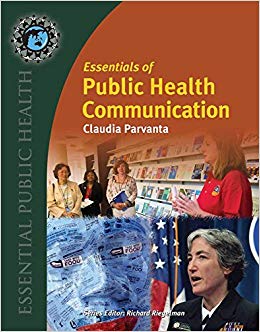
By Claudia Parvanta, David E. Nelson, Sarah A. Parvanta
Series: Essential Public Health
Paperback: 416 pages
Publisher: Jones & Bartlett Learning; 1 edition (October 13, 2010)
Language: English
ISBN-10: 0763771155
ISBN-13: 978-0763771157
Note: this title was originally printed in color, but now that it is black and white. The field of communications is increasingly recognized as a powerful tool in addressing the world’s most imperative public health challenges. Effective communication in health campaigns can inform, empower, or persuade individuals to adopt healthier lifestyles as well as foster public debate and policy change. Featuring a full chapter on informatics, this book is devoted to the competencies in health communication and informatics recommended by the Association of Schools of Public Health. With chapter contributions from some of the leading experts in public health informatics and epidemiology, health communication and evaluation, Essentials of Public Health Communications introduces concepts and examples that will prepare students to enter a local health department, community organization or government agency, and contribute to health communication research, patient counseling, materials design, program management and media relations. Written specifically for student use, this book presumes no prior knowledge of the health communication or the informatics fields. Concepts are presented in clear, jargon free language, with terms defined throughout. Key Features: • Rather than simply presenting theories and cases, this text emphasizes the framework and methods, breaking down complex tasks into steps for mastery. • Simplifies key concepts in public health informatics, and how data are transformed into useful information and effective presentations. • Examines how health communication is actively being used by the leading public health agencies and organizations today. • A companion website provides a complete package of instructor resources including sample syllabi and curriculum guides for two semesters of instruction, as well as small scale research projects. • Includes suggested health communication projects that can be implemented at an academic institution, or small scale community level, to enable hands-on learning. Looking for more real-life evidence? Check out Cases 1, 5, 6, 10, 15, 16, & 18-21 in Essential Case Studies in Public Health, Putting Public Health into Practice.
Premium Content
Login to buy access to this content.What's Your Reaction?
Excited
0
Happy
0
In Love
0
Not Sure
0
Silly
0

